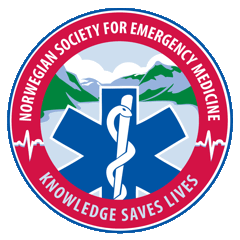

Historien om Akutt- og Mottaksmedisin i Norge ble skrevet:
9. januar, 2017:
Helseminister Bent Høie godkjenner Akuttmedisin som første nye medisinske spesialitet på 20 år!
10. januar, 2018:
NORSEM ble full medlem av
International Federation of Emergency Medicine.

Norsk selskap for akuttmedisin (NORSEM), stiftet i 2010, har som hovedmål å bedre den akuttmedisinske kunnskap og pasient behandling i Norge.
NORSEM er en frivillig interesseorganisasjon for leger som primært vil arbeide for å bedre den norske akutt- og mottaksmedisinen. Akuttmedisin er et fagområde som omhandler kunnskap og ferdigheter nødvendig for forebygging, diagnostisering og håndtering av akutte sykdommer og skader. Akuttmedisin omfatter somatiske og psykiske akutte tilstander som kan affisere alle mennesker. Akuttmedisin i internasjonal forstand blir bedre beskrevet som akutt- og mottaksmedisin.
NORSEM jobber for å bedre pasientbehandlingen i norske akuttmottak og utvikle Norges nyeste medisinske spesialitet. Selskapet vil fremme samarbeid og utveksling av kunnskap og ferdigheter mellom leger og annet helsepersonell som jobber innenfor akuttmedisin.
NORSEM har stor respekt for eksisterende akuttmedisinske foreninger og organisasjoner i Norge og håper å kunne være en samarbeidspartner til disse. NORSEM vil samarbeide med sine tilsvarende organisasjoner i de nordiske landene, samt bygge opp et bredt internasjonalt nettverk. Selskapet jobbet aktivt for at akuttmedisin blir egen spesialitet i Norge.
Dear Friends,
On January 9th, the Norwegian Minister of Health announced the newest Norwegian medical specialty: Emergency Medicine! This signals a milestone in Norwegian medical history. The last medical specialty to be approved was orthopedic surgery in 1997, and that was after a 50-year struggle for recognition.
Our road to specialty recognition started in 2010 when Dr. Lars Petter Bjørnsen, a young Norwegian doctor, founded the Norwegian Society for Emergency Medicine, with the goal of improving patient safety by placing experienced Emergency Medicine physicians in the Emergency Department. His cause was recognized by his fellow colleagues at St.Olav’s University Hospital in Trondheim, and they started the arduous task of rearranging the established medical structure in the Norwegian Emergency Department; a system that was characterized by the youngest, most inexperienced doctors in front, with lack of supervision and direction.
Not surprisingly, this change was met with a lot of opposition, especially from our fellow physician colleagues. These colleagues had difficulty understanding the specialty for what it was: a major support for those in front (patients, nurses and interns), as well as a welcome relief of duty for those experienced specialists without an affiliation to the emergency department, and with responsibilities elsewhere in the hospital.
The “movement” of emergency medicine gained momentum, and in 2014 resulted in a political request to explore how an Emergency Medicine specialty could be established. NORSEM had by then been “promoted” to an independent specialty society under the Norwegian Medical Society (Den Norske Legeforening) and, thus, was allowed to participate in these negotiations. This journey has been very demanding, but in the end, personal intervention by the Norwegian Minister of Health, Bent Høie, cleared the last obstacles and a new specialty was born.
This specialty has been the result of many hours of hard work by lots of people. There is not enough place in this letter to mention them all, but I would like to mention a couple of people that have been of special importance to this achievement.
First of all Dr. Lars Petter Bjørnsen, founder of the Norwegian Emergency Medicine movement without whom we never would have started. Dr. Kåre Løvstakken who pioneered Emergency Medicine in a country that was not ready at the time. His successes, and moreover his failures, made it possible for other hospitals to succeed. Kåre never wavered, despite overwhelming odds and criticism.
Another important support group has been the Norwegian legislature and politicians, especially the head of the Norwegain Health Committee, Kari Kjønaas Kjos; political advisor, Lone Kjølsrud; and of course our Minister of Health, Bent Høie, without whom this never would have been possible. We were also fortunate to have relentless support from the International Federation of Emergency Medicine, The European Society for Emergency Medicine and from our fellow Scandinavian Societies for Emergency Medicine in Sweden, Iceland and Denmark.
So what’s next? The real challenge is in front of us: creating and nurturing our new specialty, so that our patients may have the best care possible whenever and wherever they come to the Emergency Department.
This is not something that will be achieved within the next month, year, or even the next decade. This will be an ongoing development and we will meet obstacles, opposition and setbacks. However, the motion of progress seldom is linear, rather it meanders forward. This is a journey that will require participation from ALL of us. WE will make this a success. So buckle up and let’s get busy. Our patients await us!
Kind regards,
Harry Achterberg, NORSEM Chairman






